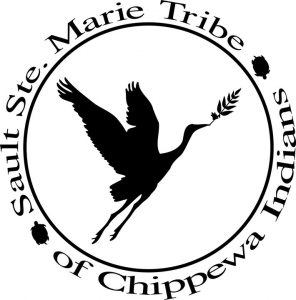Our Mission and Purpose
Sawyer Village promotes community and economic development by offering affordable, clean and comfortable rentals to individuals of all income levels. Sawyer Village accomplishes this through 1) prudent property and asset management practices, 2) offering employment and career training opportunities, and 3) providing excellence in customer service.
We are organized as an enterprise of the Sault Ste. Marie Tribe of Chippewa Indians (The Sault Tribe). Our employment opportunities are consistent with the Tribe’s goal of self-sufficiency.
The Sault Tribe
A rich history, a proud people
The Sault Ste. Marie Tribe of Chippewa Indians is a modern expression of the Anishinabeg who lived in this region of the Great Lakes for more than 500 years. The roots of the Tribe’s modern government extend to the 1940s, when a group of Sugar Island residents gathered to talk about their common history. At first, these gatherings were small – no more than two or three residents sharing thoughts over coffee in the kitchen of a neighbor’s home. Over time, as discussions turned to action plans, the meetings grew larger and more formal.
These Sugar Island residents were descendants of the Anishinabeg who for hundreds of years had made their homes near the rapids of the St. Mary’s River, which they called Bawating – the Gathering Place. This area would later become the City of Sault Ste. Marie. In 1665, their ancestors greeted the French who traveled from Montreal to the Sault to obtain beaver pelts for the growing fur trade. When French sovereignty ended a century later in 1763, the English moved into the area and took over the wealthy fur trade. By 1820, the British had been replaced by Americans, and the Anishinabeg ceded 16 square miles of land along the St. Mary’s River to the United States to build Fort Brady. In 1836, a second treaty was signed that ceded northern lower Michigan and the eastern portion of the Upper Peninsula to the United States. In return, the Anishinabeg received cash payments and ownership to about 250,000 acres of land. But over the next 20 years, the Anishinabeg watched as the terms of the treaty were violated by white settlers moving into northern Michigan. So in 1855, the chiefs signed another treaty with the Americans that allotted lands to Anishinabeg families.
The Sugar Island residents came to understand that while the treaties granted large tracks of land to the federal government, the documents did not end their sovereignty, or terminate their ancestral right to hunt and fish on the ceded lands and waters of the Anishinabeg.
A New Name
On December 24, 1953, the residents became the “Sugar Island Group of Chippewa Indians and Their Descendants.” At that time, Sault Ste. Marie and Sugar Island contained no lands for their people, and the federal government considered them members of the Bay Mills Indian Community. The Descendants did not feel part of the Bay Mills Community, located 30 miles west of Sugar Island. Bay Mills had not extended services to the Sugar Island residents and had not represented their needs at Tribal council meetings. As a result, the Sugar Island Group pushed for recognition as a separate Tribe. Their actions were motivated by the impoverished community in which they lived. Many of their friends and family members lacked jobs and lived in inadequate homes, along unlit and unpaved streets.
Federal Recognition
Federal recognition would let the Tribe contract with the federal government for basic services. Gaining recognition was not easy. The Descendants had no financial resources, no political support, and little information on how to present their claims to the federal government. They were fortunate, however, because the U.S. government had recently changed its policy toward Indian tribes with the passage of the Indian Reorganization Act of 1934. The Act ended an era of Indian assimilation policies by creating laws to encourage tribes to reorganize their traditional economies and communities into self-governing nations. Most important, the Descendants saw the Act as a way to improve their Indian community. Federal recognition would restore their sovereignty as a separate nation within the United States, give focus to their land claims, open the door to elect a government able to take land into trust, and lead to the recognition of their treaty rights to hunt and fish.
Federal recognition took more than 20 years to complete. The Descendants built their case by searching archives, gathering historical documents, census rolls, church records, and military records. Piece by piece, year by year, their research made clear that the Sugar Island Indians were a distinct Indian community entitled to federal status, In the mid 1960s, the Descendants changed their name to the Original Bands of Chippewa Indians and Their Heirs to include members living in other eastern Upper Peninsula communities in the recognition process. In the early 1970s, the leaders of the Original Bands of Chippewa Indians traveled to Washington and successfully submitted their historical findings and legal argument to the Secretary of Interior, who granted federal status in 1972. Once recognized, the Original Bands became the Sault Ste. Marie Tribe of Chippewa Indians. Land was taken into trust in March 1974, and our Constitution – the final step in this long process – was adopted by our members in fall 1975.
Tribal Leaders
Joseph K. Lumsden took office in 1973. A graduate of Lake Superior State College, and a trained teacher, he played a leading role in the creation of the Tribe’s first housing, education and health programs. Under his tenure, the Tribe developed courts and police departments, and won the right to fish in the ceded waters of the Great Lakes. Since recognition, other leaders have stepped forward.
A Bright Future
Today, the Tribe is a fully recognized Indian community with 44,000 enrolled members living throughout Michigan and the United States. Its sovereign status is recognized by Michigan, the U.S. government, and Canada. The Tribe operates under a Constitution and Bylaws approved in November 1975 by the Secretary of Interior.
It is governed by an elected 12-member Board of Directors representing five geographic election units in the eastern Upper Peninsula. The chairman’s position is elected at large. Board members serve four-year terms, which are staggered, putting half the Board up for election every two years.
The powers of the Tribe’s Board of Directors are set forth in the Constitution. They include the power to enact and enforce ordinances to govern Tribal lands, to establish businesses and to expend funds for the betterment of the community. The Tribe’s government is headquartered in Sault Ste. Marie, where it administers 50 membership services and directs the operation of 22 businesses.
In 1984, the Board of Directors voted to open the Tribe’s most successful business – Kewadin Casinos. Kewadin’s rapid success provided the funds to expand the Tribe’s business holdings from one to five casinos and take ownership of 15 non-gaming businesses, including Sawyer Village. In 1998, these businesses employed nearly 2,500 people, making the Tribe northern Michigan’s largest employer.
Revenues from the Tribe’s casino and non-gaming businesses are spent to better its community. They have purchased lands to increase reservation holdings, finance the construction of new health centers, and pay for added housing. And, they support satellite offices in St. Ignace, Manistique, Escanaba, Munising, Sawyer and Hessel extending membership services throughout the Tribe’s seven-county service area of the eastern Upper Peninsula.

For more information about The Sault Tribe, go to www.saulttribe.com
